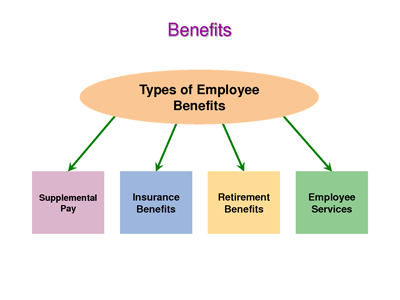Pay stubs are more than just records of your wages; they provide a detailed breakdown of your compensation, including deductions and contributions for benefits like health insurance and retirement plans. Understanding how pay stubs reflect these benefits can help employees make informed decisions about their finances, monitor their contributions, and ensure that they are receiving the benefits promised by their employers.
In this article, we will explore how health and retirement benefits appear on pay stubs, why they matter, and tips for reading them effectively.
Understanding Pay Stubs
A pay stub, also known as a paycheck stub or earnings statement, accompanies your paycheck and provides a detailed summary of your earnings and deductions for a specific pay period. Pay stubs typically include:
- Gross pay: Total earnings before deductions.
- Net pay: Earnings after deductions.
- Taxes: Federal, state, and local income taxes.
- Other deductions: Contributions for health insurance, retirement plans, and other benefits.
By providing this detailed breakdown, pay stubs allow employees to track their earnings, verify the accuracy of deductions, and understand the total value of their compensation, including non-cash benefits.
Health Benefits on Pay Stubs
Health benefits, such as medical, dental, and vision insurance, are typically offered by employers as part of a comprehensive benefits package. Pay stubs reflect your contributions to these benefits and may also show employer contributions.
Employee Contributions
Most health insurance premiums are partially or fully paid by employees through payroll deductions. On your pay stub, these deductions are usually listed as:
- Medical insurance
- Dental insurance
- Vision insurance
- Health Savings Account (HSA) contributions
- Flexible Spending Account (FSA) contributions
For example, if you contribute $150 per month to your medical insurance plan, your pay stub will show a deduction for that amount for each pay period.
Employer Contributions
In addition to employee contributions, many employers contribute to health benefits. While these contributions are not deducted from your paycheck, some pay stubs show the employer’s share to reflect the total value of your benefits. This transparency helps employees understand the true cost and value of their health coverage.
Pre-Tax vs. Post-Tax Deductions
It’s important to note that health benefit deductions may be pre-tax or post-tax. Pre-tax deductions reduce your taxable income, lowering the amount of income tax you pay. Examples include contributions to employer-sponsored medical plans and HSAs. Post-tax deductions are taken after taxes are applied and do not reduce taxable income. Understanding these distinctions is crucial for accurate tax planning.
Retirement Benefits on Pay Stubs
Retirement benefits, such as 401(k), 403(b), or pension plan contributions, are another key component of compensation reflected on pay stubs. These contributions allow employees to save for the future while often benefiting from employer matches.
Employee Contributions
Employee contributions to retirement plans are typically deducted directly from your paycheck. On a pay stub, you might see line items such as:
- 401(k) contributions
- 403(b) contributions
- Roth 401(k) contributions
- Pension plan contributions
For example, if you elect to contribute 5% of your salary to a 401(k) plan, your pay stub will show the deduction for each pay period, ensuring that the contributions are correctly withheld.
Employer Contributions and Matching
Many employers offer matching contributions to retirement plans, which enhance the total value of your retirement savings. While employer contributions are not deducted from your paycheck, some pay stubs include a section showing the employer match. This transparency helps employees monitor both their contributions and the employer’s support toward long-term financial security.
Pre-Tax and Roth Contributions
Retirement contributions can also be pre-tax or Roth (after-tax). Pre-tax contributions lower your taxable income in the current year, while Roth contributions are made after taxes and grow tax-free for retirement. Pay stubs will specify the type of contribution, which is essential for understanding your tax implications and retirement planning.
Reading Your Pay Stub Effectively
To make the most of your pay stub, follow these tips for understanding health and retirement benefits:
- Check the accuracy of deductions: Verify that your health insurance premiums, HSA/FSA contributions, and retirement plan contributions match your election forms.
- Understand employer contributions: Look for employer contributions to health and retirement benefits to see the full value of your compensation.
- Monitor pre-tax vs. post-tax deductions: Understanding how deductions affect taxable income can help with tax planning.
- Track year-to-date totals: Most pay stubs include year-to-date (YTD) amounts for each deduction. Tracking these totals helps ensure you meet contribution limits and anticipate tax liabilities.
- Ask questions when needed: If any deduction or contribution seems incorrect, contact your HR or payroll department promptly.
The Importance of Transparency
Pay stubs are a crucial tool for financial transparency. They allow employees to:
- Understand the true value of their total compensation, including benefits.
- Plan for healthcare expenses and retirement savings.
- Detect errors or discrepancies in deductions.
- Make informed decisions about benefit elections.
By regularly reviewing pay stubs, employees can ensure they are maximizing their benefits and avoiding surprises during tax season or when applying for loans.
Common Questions About Pay Stubs and Benefits
Q1: Why doesn’t my pay stub show my employer’s health insurance contributions?
Some pay stubs only show employee deductions. Employer contributions may be listed elsewhere, such as in annual benefits statements.
Q2: How often should I review my pay stub?
It’s best to review each pay stub to verify deductions, contributions, and gross/net pay accuracy.
Q3: Can changes in benefits affect my take-home pay?
Yes. Changes in health insurance plans, HSA contributions, or retirement contributions directly affect your net pay.
Conclusion
Pay stubs are a valuable tool for understanding how health and retirement benefits are integrated into your compensation. They provide detailed information on employee and employer contributions, pre-tax vs. post-tax deductions, and year-to-date totals. By carefully reviewing pay stubs, employees can monitor their benefits, plan for the future, and ensure that their compensation package is accurately reflected.



